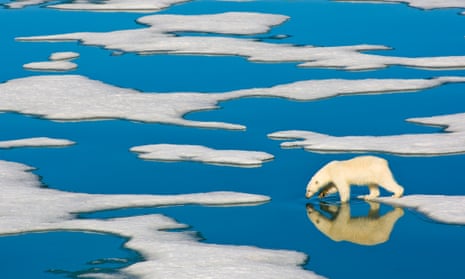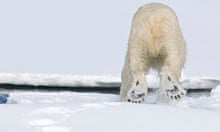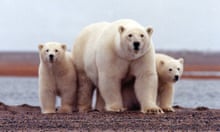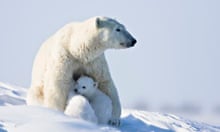Last year I saw my first polar bear in the wild.
I was on board the polar research ship, the Akademik Sergey Vavilov. The vessel, though under Russian command, had been hired by a Canada-based adventure-tourism company for its Arctic excursions. We were at breakfast when John, our rugged Australian expedition leader, told us over the ship’s public address system that a bear had been sighted on land. We were crossing the mouth of one of the westerly fjords of Svalbard, a Norwegian archipelago in the Arctic Ocean.
“Get your life jackets on,” he urged. “Gangway, 9am.”
Our Zodiac inflatables, each carrying 10 passengers, cruised parallel to the rocky coast. We looked at the bear and the bear looked right back at us. Once or twice, he lifted his head, half raising his torso, before lying down again.
“This bear’s doing what a bear is meant to do,” said our guide Cecilia. “He’s lying down, conserving energy. If you see polar bears walking around, that means they’re hungry and looking for food.”
About 3,000 polar bears live in Svalbard, out of an estimated worldwide total of 20,000. They need ice to survive — it’s where they find the seals that constitute their main food source. For the past couple of years, though, the ice, which in winter used to cover most of the sea around Svalbard, hasn’t arrived.
“You can’t be sure it’s down to global warming,” Cecilia said. “But the reality is that there are some very hungry bears around.”
Last month, the scientific council of the United Nations Environment Programme’s Convention on Migratory Species (CMS) gave its positive advice on a Norwegian proposal to list the polar bear (Ursus maritimus) under the convention. In the explanatory document, Norway observes that the polar bear is indeed a migratory species, falling within the ambit of CMS. Of the 19 subpopulations (spread out between five countries, at least eight directly overlap two or more national jurisdictions, thus qualifying them for protection under the CMS.
Norway points out that climate change is emerging as the most far-reaching and significant stressor on Arctic biodiversity, including polar bear populations. But contaminants also play a part. Many pollutants reach high levels in polar bears due to their high fat diet and high position in the food chain. A number of the organochlorine pollutants are lipophilic; that is, they are deposited in the fat of the animals that consume them. Because animals in the Arctic marine ecosystem are highly dependent on fat for storing energy, growth, insulation and buoyancy, these pollutants are rapidly accumulated progressively up the food chain.
In proposing the listing of the polar bear under the CMS, Norway argues that, given the pressures polar bears already face, it makes sense for the range states to agree, within the CMS framework, on some specific protection measures.
Increasing activities of Arctic industries, such as petroleum or increased shipping activities, have significant potential to place a further burden on subpopulations already weakened by the cumulative impacts of habitat destruction. As such, there is an urgent need to discuss mitigation of these impacts before they become entrenched and the solutions more difficult to find.”
Norway notes that in the Norwegian Arctic and Russia, polar bears are protected from all forms of harvest except problem or defence kills, although poaching is, apparently, a significant conservation issue in Russia. There is, however, a legal “harvest” of polar bears in Greenland, the US and Canada.
Some 600 of these bears enter each year into international trade. To the disappointment of many, the Convention on International Trade in Endangered Species (Cites), at its last meeting in Bangkok, Thailand, in March 2013, failed to agree on a ban on international trade in polar bear products.
The failure – for the time being - to agree measures in Cites does not, of course, preclude important action being taken under CMS now. Such measures might, inter alia, relate to habitat protection, or the regulation of shipping or the exploitation of resources such as oil, so as to minimise the impact on polar bear populations.
The 11th conference of the parties to the CMS (COP 11) will take place in Quito, Ecuador, at the beginning of November. The protection of polar bears is not, of course, the only major issue on the table. There are also important proposals for the protection of sharks and rays, and all species of sawfish, as well as lions, and the great bustard. There are also action plans to be approved for the Argali sheep, Pacific loggerhead turtle and the endangered Saker falcon.
Remembering as vividly as I do my Svalbard trip last year and those close encounters with polar bears (we saw five altogether) I have, of course, a particular interest in the Norwegian proposal. “Iconic” may be an overused word. But if the polar bear is not an iconic species, worth protecting by all means, I don’t know what is.
- Stanley Johnson is an ambassador for the United Nations Environment Programme’s Convention on Migratory Species. His new book, Stanley I Resume, will be published by Robson Books on 23 September.








